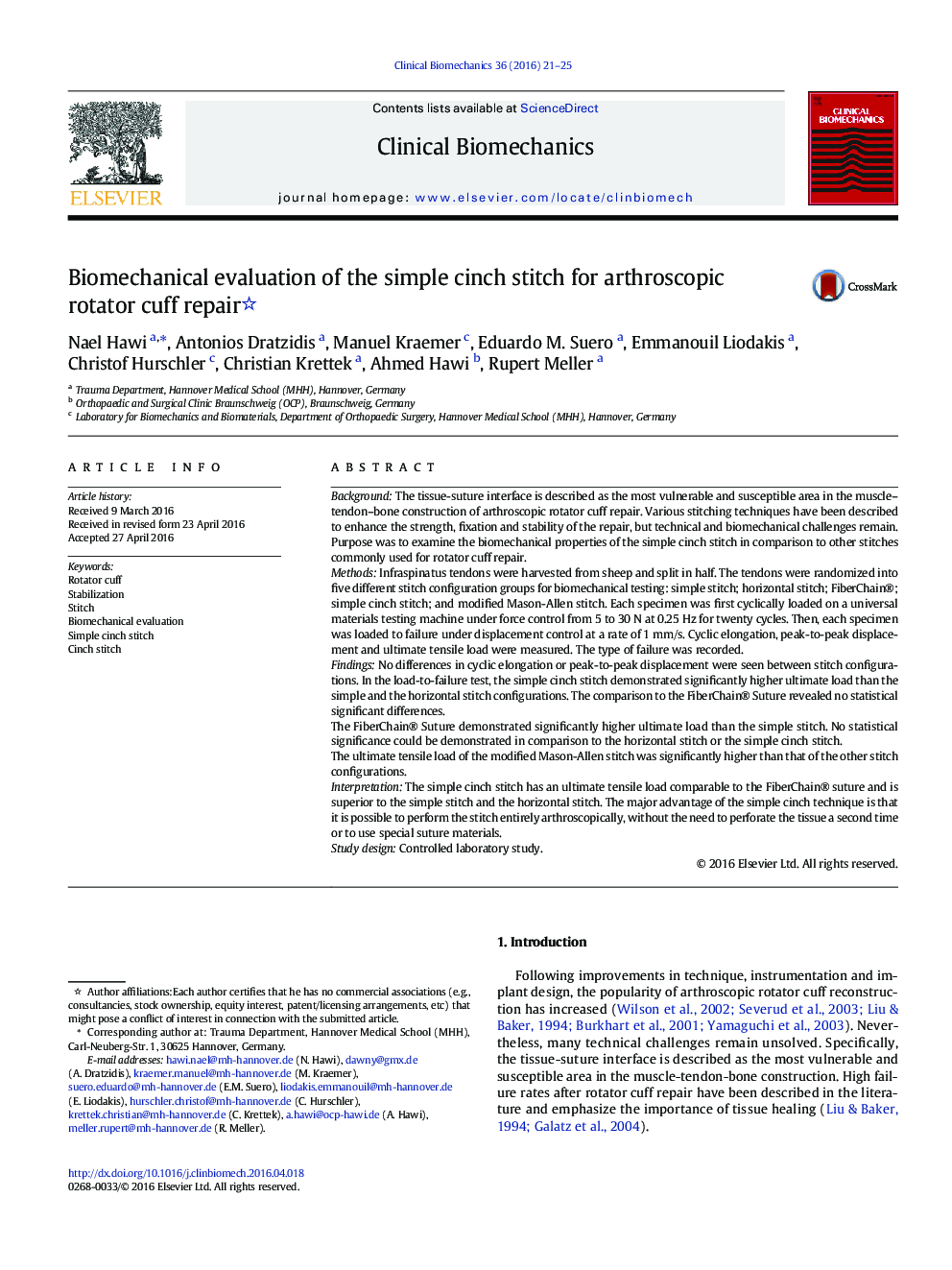| Article ID | Journal | Published Year | Pages | File Type |
|---|---|---|---|---|
| 4050037 | Clinical Biomechanics | 2016 | 5 Pages |
BackgroundThe tissue-suture interface is described as the most vulnerable and susceptible area in the muscle–tendon–bone construction of arthroscopic rotator cuff repair. Various stitching techniques have been described to enhance the strength, fixation and stability of the repair, but technical and biomechanical challenges remain.Purpose was to examine the biomechanical properties of the simple cinch stitch in comparison to other stitches commonly used for rotator cuff repair.MethodsInfraspinatus tendons were harvested from sheep and split in half. The tendons were randomized into five different stitch configuration groups for biomechanical testing: simple stitch; horizontal stitch; FiberChain®; simple cinch stitch; and modified Mason-Allen stitch. Each specimen was first cyclically loaded on a universal materials testing machine under force control from 5 to 30 N at 0.25 Hz for twenty cycles. Then, each specimen was loaded to failure under displacement control at a rate of 1 mm/s. Cyclic elongation, peak-to-peak displacement and ultimate tensile load were measured. The type of failure was recorded.FindingsNo differences in cyclic elongation or peak-to-peak displacement were seen between stitch configurations. In the load-to-failure test, the simple cinch stitch demonstrated significantly higher ultimate load than the simple and the horizontal stitch configurations. The comparison to the FiberChain® Suture revealed no statistical significant differences.The FiberChain® Suture demonstrated significantly higher ultimate load than the simple stitch. No statistical significance could be demonstrated in comparison to the horizontal stitch or the simple cinch stitch.The ultimate tensile load of the modified Mason-Allen stitch was significantly higher than that of the other stitch configurations.InterpretationThe simple cinch stitch has an ultimate tensile load comparable to the FiberChain® suture and is superior to the simple stitch and the horizontal stitch. The major advantage of the simple cinch technique is that it is possible to perform the stitch entirely arthroscopically, without the need to perforate the tissue a second time or to use special suture materials.Study designControlled laboratory study.
